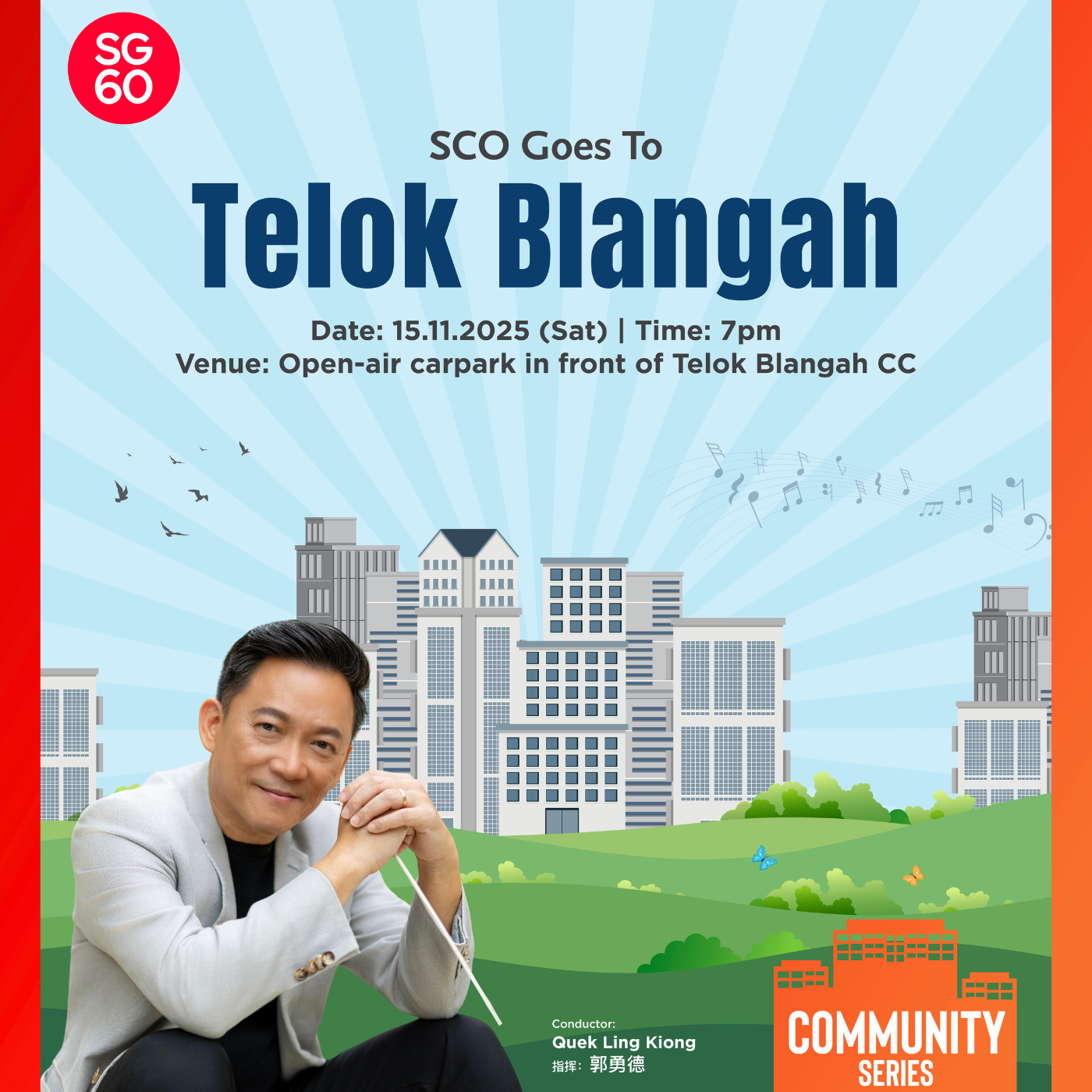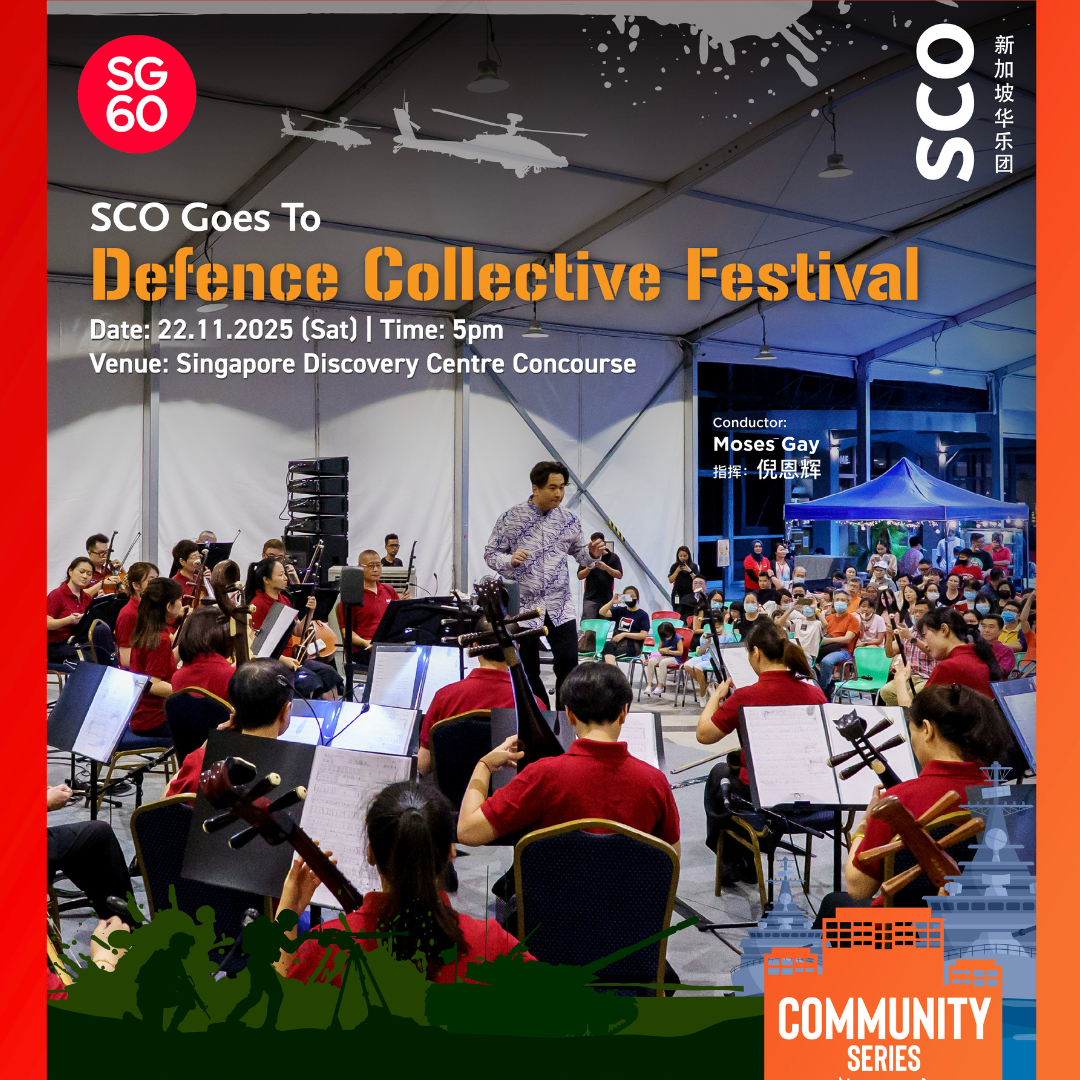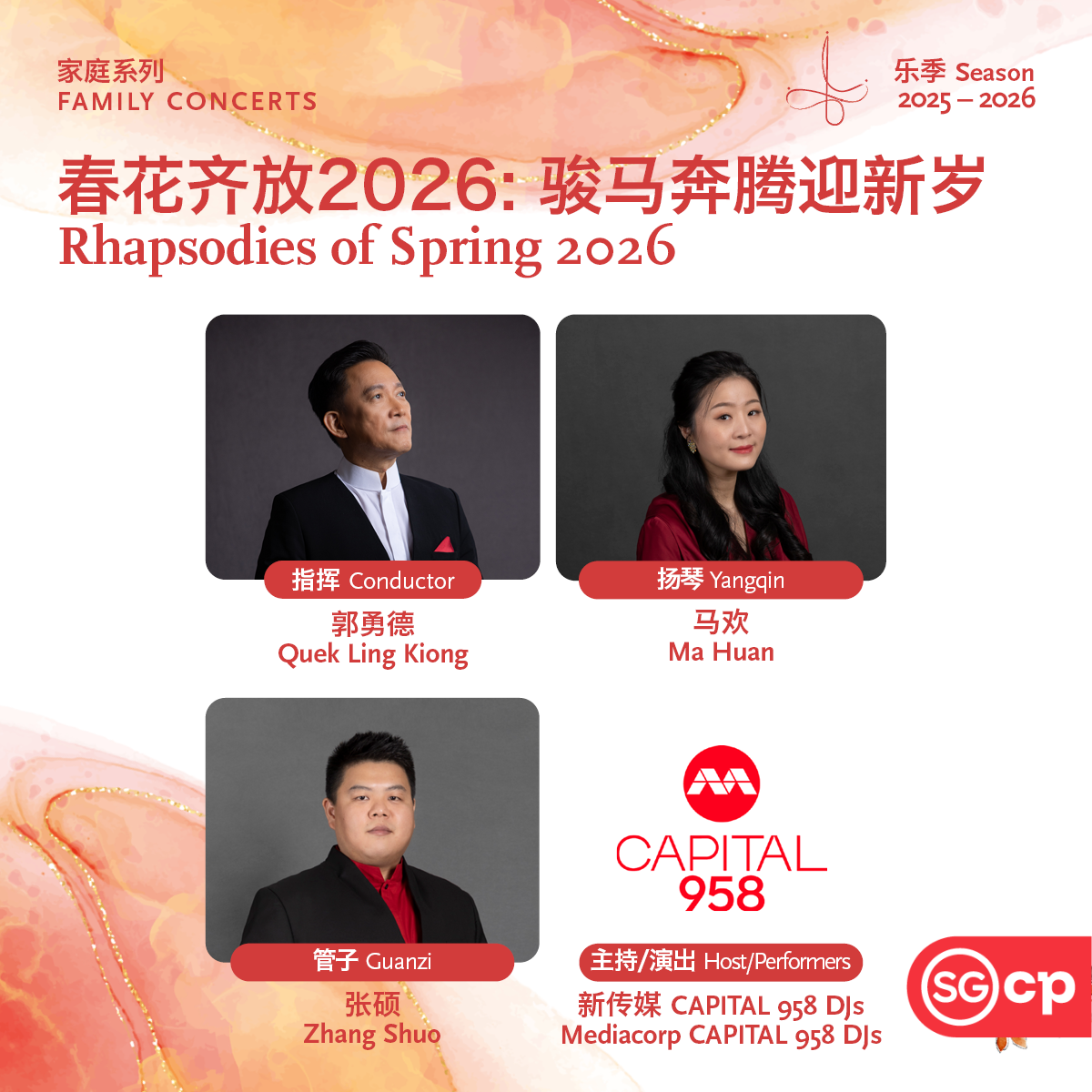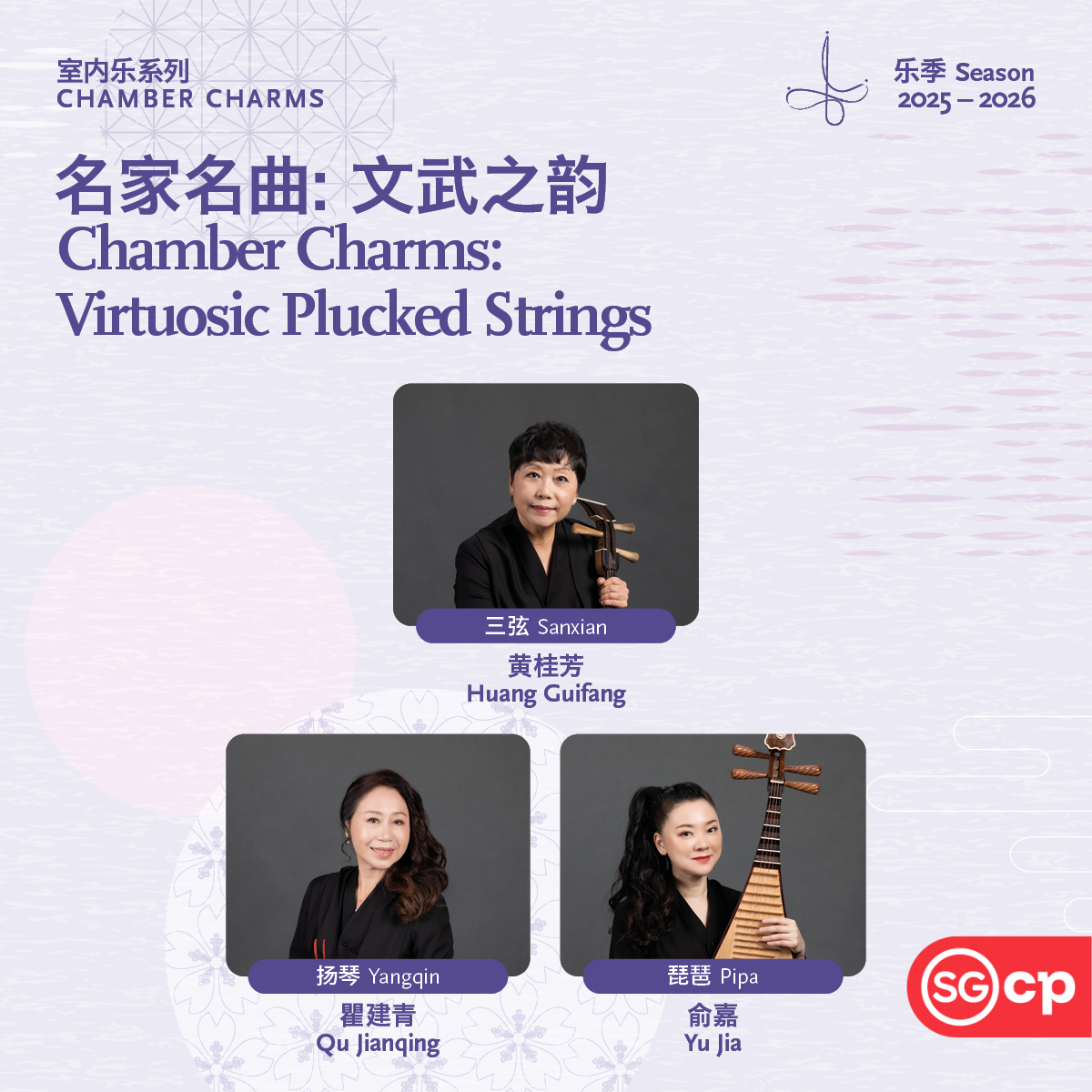Taiwanese conductor Liu Chiang-Pin is currently the Artistic Director of the Hsinchu City Youth Chinese Orchestra and is active across Taiwan, mainland China, and Hong Kong. In his early years, he served as a suona performer with the Taipei Chinese Orchestra, during which he also coached several student orchestras that achieved outstanding results in music competitions. In 2011, he founded the Hsinchu City Youth Chinese Orchestra and, in the same year, organized the Hsinchu Chinese Music Festival. The orchestra is composed of students from major music institutions across Taiwan. Under Liu’s professional guidance, this young and vibrant orchestra has premiered numerous new works by contemporary composers, many of which have since become important additions to the Chinese music repertoire. Liu’s connection with Singapore began in 2017, when he collaborated with the Singapore Chinese Orchestra in the concert Portraits of Taiwan. He was later invited to conduct the Singapore National Youth Chinese Orchestra, and his efforts also facilitated the orchestra’s exchange performances in Taiwan.
This concert centres on traditional Chinese wind and percussion instruments, showcasing the diverse characteristics of chuida (wind and percussion) music. Originating from folk traditions associated with weddings, funerals, and festive occasions, chuida music often incorporates expressive body movements during performance to heighten its emotional impact and grandeur. The programme features works that demonstrate how composers use these instruments to explore a wide range of styles and colors in Chinese orchestral music. Two pieces are based on traditional chuida elements, including the well-known classic A Well-Matched Fight by Li Minxiong, which is rooted in Zhedong luogu (Eastern Zhejiang gongs and drums) and develops its musical ideas from rhythmic patterns known as “long tou long wei” (“dragon head and tail”). Another traditional work, Da Di Jiao, was transcribed and arranged by suona performer Wang Zhanzhan. The original tune, Di Jiao, is a folk melody popular in the border regions of Jiangsu, Shandong, Henan, and Anhui provinces. The piece features the suona as the leading instrument, accompanied by the sheng and percussion. Using “man ban long” (“slow dragon”) and “kuai ban long” (“fast dragon”) as its main motifs, the work employs the improvisatory techniques characteristic of folk wind and percussion music to convey a vivid regional flavour.
Two of the works in this concert draw inspiration from ancient culture. Among them, Impressions of Chinese Music was originally composed by Jiang Ying in 2013 for a large-scale theatre production presented by the China National Traditional Orchestra, directed and written by Wang Chaoge. The production revived ancient Chinese instruments, including those depicted in the Dunhuang murals. Later, Jiang Ying adapted the music into a suite titled Impressions of Chinese Music, consisting of three movements. In this concert, the second movement, The Past and Present Life, will be performed, featuring Zeng Zhi and Zhang Shuo as soloists on the xiao and bili, respectively. The two instruments engage in a thematic dialogue throughout the piece, weaving a tender and emotionally profound musical narrative. Singaporean composer Wang Chenwei has a deep interest in Indian culture, a trait reflected in his 2017 composition Akṣara. The title means means “syllable” or “letter” (of an alphabet) in the ancient Indian language of Sanskrit. In this work, Wang fuses traditional Chinese wind and percussion music with the metres of Sanskrit poetry, whose sequences of heavy and light syllables are translated into long and short musical notes. Through this ingenious combination of phonetic rhythm and music, he presents a distinctive sound rooted in traditional Chinese wind and percussion idioms.
Percussion and wind music can not only convey a lively, festive, or exotic atmosphere, but under the composer’s ingenuity, it can also present a unique fusion of Eastern and Western styles. In this concert, three other well-known works are reinterpreted through the composers’ creative arrangements, giving each piece a distinctive character. Dark Sky Blues, composed by Lim Kiong Pin, the diyin sheng player of the Singapore Chinese Orchestra, draws on the Taiwanese folk song thi o o. The folk melody is combined with the style of blues music, creating a fresh musical language. Canto Ballad, rearranged by composer Phang Kok Jun from the Cantonese piece Autumn Moon Over the Calm Lake, is performed by Kevin Cheng on the traditional sheng. Combined with a jazz trio, the work presents a musical dialogue between classical and modern, Eastern and Western traditions. Jin Shiyi, suona player of the Singapore Chinese Orchestra, reinterprets the ancient piece Three Refrains on the Song of Yangguan Pass with a humorous and contemporary flair, performed with the SINGuan, suona, and vocals. The Tang-dynasty poet Wang Wei’s poem Seeing off Yuan’er on a Mission to Anxi is incorporated into rap-style chanting. Wang Chenwei further rearranged the work for four guan and Chinese orchestra under the title West Beyond the Yangguan Pass, giving this traditional masterpiece a completely new identity.
The closing work of the concert is Wang Danhong’s A Song for the Heavens. Wang Danhong is skilled at composing with folk music materials. A Song for the Heavens, featuring the suona as the lead instrument, depicts the joys and sorrows of the people on the Loess Plateau in northern Shaanxi. The melody alternates between sorrowful and rugged, combining a sense of desolation with brightness, conveying a spirited and uplifting character. Wang Danhong excels in composing large-scale Chinese orchestral works, and the orchestration further highlights the intense emotions expressed by the lead instrument.
Curated by Jin Shiyi, suona player of the Singapore Chinese Orchestra, the selection resonates with the rich musical journey of conductor Liu Chiang-Pin. The performance begins with Chinese percussion and wind music in a traditional style, exploring the early character of Chinese orchestra music, moves through cross-cultural musical interpretations, and finally returns to recent works rooted in folk music materials, offering the audience a richly imaginative auditory and visual experience.













